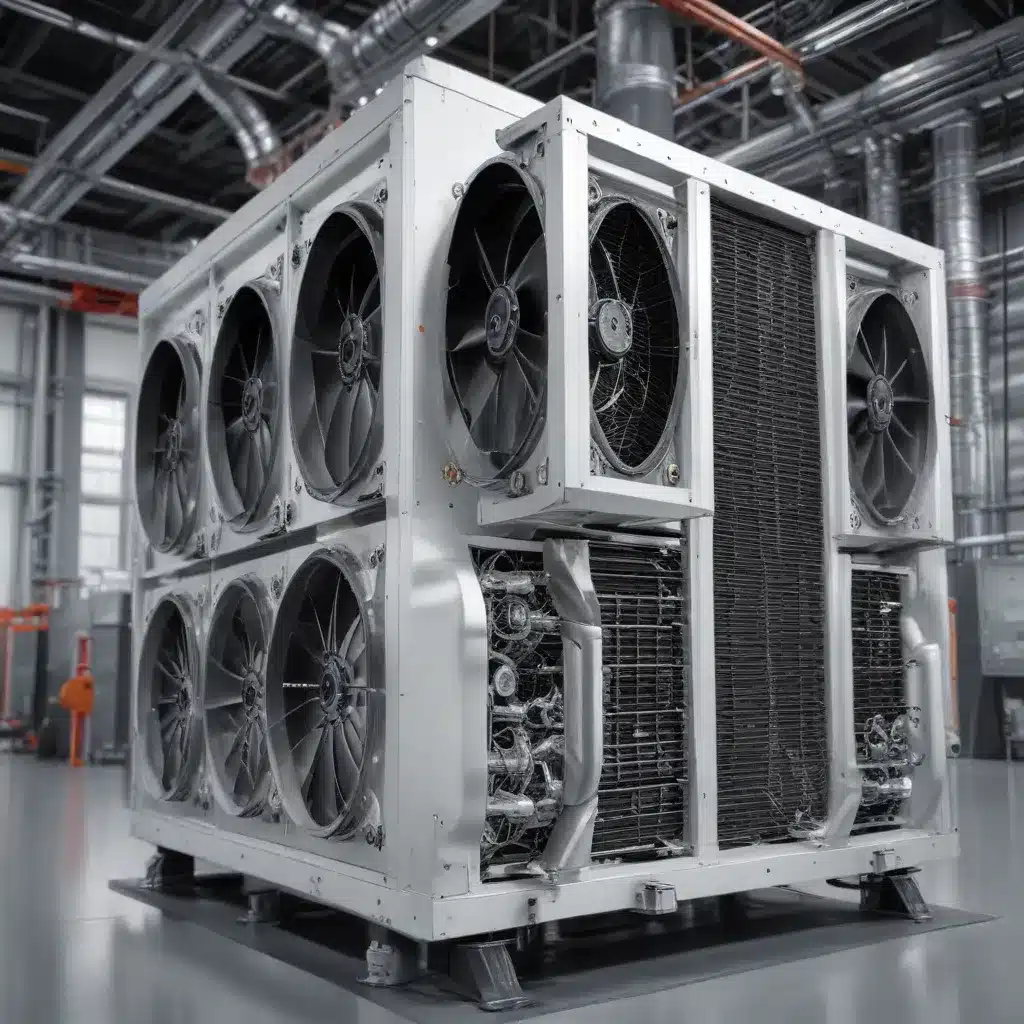
The Pivotal Role of Air-Cooled Heat Exchangers in the New Era of Accelerated Computing
As the world rapidly embraces the transformative power of artificial intelligence (AI) and generative technologies, the demand for energy-efficient and high-performance cooling solutions has never been more crucial. At the heart of this revolution lies the air-cooled heat exchanger (ACHE), an unsung hero that plays a pivotal role in maintaining the optimal thermal conditions required for the next generation of computing infrastructure.
In this comprehensive article, we will delve into the groundbreaking innovations that are redefining the future of air-cooled heat exchanger technology, enabling critical industries to unlock unprecedented levels of efficiency, sustainability, and reliability in their operations.
Adapting to the Insatiable Appetite of AI Factories and Data Centers
The rapid rise of AI-powered applications, from large language models to data-intensive workloads, has created an insatiable appetite for computing power that is straining traditional data center infrastructure. As Jensen Huang, CEO of NVIDIA, aptly stated, “The next industrial revolution has begun,” and the key to this revolution lies in the ability to efficiently manage the heat generated by these powerful systems.
“Companies and countries are partnering with NVIDIA to shift the trillion-dollar traditional data centers to accelerated computing and build a new type of data center — AI factories — to produce a new commodity: artificial intelligence.” – Jensen Huang, NVIDIA CEO
To address this challenge, leading technology companies like NVIDIA are introducing innovative air-cooled heat exchanger solutions that are specifically designed to support the demanding thermal management requirements of AI-driven computing infrastructure. These cutting-edge ACHEs leverage advanced materials, intelligent control systems, and modular design principles to deliver unparalleled performance and energy efficiency.
Tackling the Thermal Management Challenge in Critical Infrastructure
The exponential growth in AI and high-performance computing has placed unprecedented demands on the thermal management capabilities of mission-critical infrastructure, from data centers and industrial facilities to healthcare and transportation hubs. Conventional air-cooling methods are often struggling to keep pace, leading to increased energy consumption, reduced system reliability, and heightened sustainability concerns.
However, the air-cooled heat exchanger industry is responding with a wave of innovative solutions that are transforming the landscape of thermal management. These advancements include:
Intelligent Thermal Monitoring and Adaptive Control
Advanced sensor networks and machine learning algorithms are enabling ACHEs to continuously monitor environmental conditions and dynamically adjust their operation, optimizing energy consumption and ensuring optimal performance. By integrating these “smart” capabilities, facility managers can proactively address thermal challenges, minimize downtime, and achieve significant energy savings.
Modular and Scalable Designs
The modular design approach championed by NVIDIA’s MGX platform allows for rapid development and deployment of customized air-cooled heat exchanger systems. This flexibility enables organizations to quickly scale their cooling capacity to meet the evolving demands of their infrastructure, whether it’s a data center, factory, or critical facility.
Enhanced Heat Transfer Efficiency
Innovations in heat transfer materials, fin geometries, and airflow management are driving significant improvements in the thermal efficiency of air-cooled heat exchangers. By optimizing heat transfer rates, these advancements are enabling ACHEs to handle higher heat loads while consuming less energy and occupying a smaller footprint.
Sustainable Cooling Solutions
Addressing the environmental impact of cooling systems has become a top priority for many organizations. Air-cooled heat exchangers are at the forefront of this sustainability push, with the integration of renewable materials, increased energy efficiency, and the adoption of circular economy principles, such as Lenovo’s “Smarter Design, Smarter Use, Smarter Return” approach.
Revolutionizing Thermal Management for the AI-Powered Future
As the world embraces the transformative potential of AI and generative technologies, the role of air-cooled heat exchangers in supporting this revolution cannot be overstated. These innovative cooling solutions are paving the way for a future where critical infrastructure can keep pace with the insatiable demands of accelerated computing, while prioritizing sustainability, reliability, and energy efficiency.
Powering the Rise of AI Factories and Data Centers
The deployment of NVIDIA’s Blackwell architecture-powered systems, featuring Grace CPUs, NVIDIA networking, and advanced air-cooled heat exchanger technology, is a testament to the industry’s commitment to enabling the next generation of AI-driven innovation. These integrated solutions provide the computational muscle and thermal management capabilities required to fuel the “new type of data center” – the AI factory.
Driving Sustainability and Circularity in Cooling Systems
Lenovo’s adoption of the circular economy approach, with its focus on “Smarter Design, Smarter Use, and Smarter Return,” is a shining example of how air-cooled heat exchanger technology can be leveraged to address sustainability goals. By incorporating recycled materials, optimizing energy consumption, and enabling responsible end-of-life management, Lenovo is paving the way for a more environmentally conscious future.
Unlocking the Potential of Critical Infrastructure
From healthcare facilities monitoring patient data to transportation hubs managing intricate logistics, the ability to maintain optimal thermal conditions is crucial for the reliable and efficient operation of critical infrastructure. The advancements in air-cooled heat exchanger technology, such as intelligent monitoring, modular scalability, and enhanced heat transfer, are empowering organizations to unlock new levels of performance and resilience.
Embracing the Future of Thermal Management
As the world’s reliance on AI, high-performance computing, and critical infrastructure continues to grow, the air-cooled heat exchanger stands as a linchpin in the quest for a more sustainable, efficient, and reliable future. By adapting to the ever-evolving demands of the digital landscape, these innovative cooling solutions are poised to play a pivotal role in unlocking the full potential of the AI revolution and safeguarding the integrity of our most vital systems.
The future of thermal management is here, and it is being driven by the groundbreaking advancements in air-cooled heat exchanger technology. As we navigate this exciting new era, the Air Cooled Heat Exchangers community remains at the forefront, providing industry-leading expertise, practical insights, and cutting-edge solutions to power the next generation of critical infrastructure.

